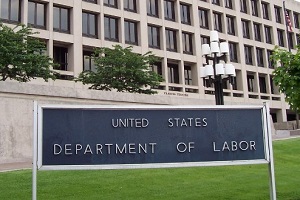 The US Department of Labor (DOL) is responsible for administering and enforcing over 180 federal laws. These country-wide mandates cover many different workplace activities for more than 10 million workplaces and 150 million workers.
The US Department of Labor (DOL) is responsible for administering and enforcing over 180 federal laws. These country-wide mandates cover many different workplace activities for more than 10 million workplaces and 150 million workers.
When employers violate DOL regulations, such as wage and hour, employee benefits, occupational safety and workers’ compensation rules, they could face stiff penalties. In 2023, these penalties are expected to get even stricter as federal regulations require the DOL to adjust penalties for inflation each year by January 15.
Health and welfare benefit plan violations are among the most common due to ever-evolving regulations. It is important for employers to be aware of DOL penalty increases for health and welfare plan violations in 2023 and how best to adjust to DOL changes.
New Department of Labor Increases ERISA Penalties for Inflation
The Department of Labor issued final regulations on January 12, 2023 that feature inflation adjustments to civil monetary penalties. These adjustments are enforced under the 1990 Federal Civil Penalties Inflation Adjustment Act and later amended under the 2015 Federal Civil Penalties Inflation Adjustment Act Improvements Act.
The issuing of this Act significantly altered the method by which the DOL calculated inflation adjustments for penalty increases. Some changes in the method included:
- Having a “catch-up” adjustment for civil monetary penalties in 2016
- Requiring federal agencies, including the DOL, to annually adjust the penalties for inflation by January 15 of each year using a cost-of-living formula
Annual adjustments of civil money penalties due to inflation are important as outdated penalties are less effective when they do not maintain pace with the cost of living. In addition, having the proper penalties in place help deter violations of these critical laws that are enforced by the Wage and Hour Division, resulting in safer and more productive workplaces.
As of January 15, 2023, the DOL’s annual inflation adjustments to civil money penalties for violations of requirements under ERISA include the following:
 ERISA § 502(c)(2) – This ERISA violation refers to the refusal or failure to file annual report Form 5500 and carries a penalty of $2,586 per day.
ERISA § 502(c)(2) – This ERISA violation refers to the refusal or failure to file annual report Form 5500 and carries a penalty of $2,586 per day.- ERISA § 502(c)(6) – This ERISA violation refers to the failure to furnish information requested by an employee and/or the DOL, and carries a penalty of $110 per day, $184 per day, or $1,846 per request.
- ERISA § 502(c)(9)(A) – This ERISA violation refers to the failure to inform employees of CHIP coverage opportunities and carries a penalty of $137 per day, per employee.
- ERISA § 715 – This ERISA violation refers to the failure to provide Summary of Benefits Coverage under the Public Health Services Act (section 2715(f), and carries a penalty of $1,362 per failure.
- Section 502(c)(4) – This ERISA violation refers to the failure to disclose specific documents that are requested under ERISA 101(k) and (l), or failure to furnish notices under 101(j) and 514(e)(3) and carries a penalty of $2,046 per recipient.
Changes to Form 5500
Sponsoring employee benefits is an excellent way for employers to attract and retain talent; however, benefits can also pose certain compliance risks. The Form 5500 Series, in particular, can be difficult to comply with due to the various versions of the form and strict requirements.
The Form 5500 Series was created to satisfy the annual reporting requirements under Title I and IV of the Internal Revenue Code and ERISA. Completing the correct version of this document requires employers to provide the government with important details about their plan’s operations, financial condition, and investments.
There are three main variations of this form, including Form 5500, Form 5500-SF and Form 5500-EZ. Form 5500 applies to most private and public sector businesses that provide plans to 100 or more participants.
Form 5500-SF is the shortened version of Form 5000 and applies to companies that have fewer than 100 plan participants. Form 5500-EZ applies to one-participant plans that cover just a business owner and spouse.
With the new DOL penalty increases in 2023, failure to file the annual report Form 5500 in a timely manner can result in a penalty of $2,586 per day. Penalties generally begin to accumulate on the date of the failure.
Changes to Form M-1
The Form M-1 was created to report information that concerns multiple employer welfare arrangements (MEWAs) and entities claiming exceptions (ECEs). This document is used to report the financial and custodial information of the MEWA, in addition to any information for compliance with Part 7 of ERISA.
The term “multiple employer welfare arrangement” refers to an employee welfare benefit plan or other arrangement created or maintained with the purpose of offering benefits to the employees of two or more employers. A MEWA also does not meet the definition of “single employer” outlined in ERISA Section 3(40)(B).
Failure to file annual report Form M-1 in a timely manner may subject the plan sponsor to a penalty of $1,881 per day. This filing requirement only applies to multiple employer welfare arrangements.
Information Requests by the DOL
Employers are responsible for complying with all information requests sent by the Department of Labor, including a Summary of Benefits and Coverage (SBC). This document provides the government with a summary of a health plan’s benefits, cost, covered health-care services and other features that are deemed important to consumers.
These plans also explain the policy’s unique features, such as significant exceptions or limits, as well as cost-sharing. Under the Affordable Care Act (ACA), health insurers and group health plan providers in America are required to provide consumers with an SBC.
New DOL penalty increases result in a penalty of $1,362 per failure for each time an employer fails to provide a compliant SBC in a timely manner per ACA requirements.
Employers can also face hefty penalties if they fail to provide plan information to the DOL upon request, such as summary plan descriptions and similar plan documents. This violation can result in a penalty of $184 per day or a maximum penalty of $1,846 per occurrence.
Changes have also been made to violations surrounding CHIP Notices. A CHIP Notice is designed to inform eligible employees of their potential right to receive financial assistance through Medicaid or the Children’s Health Insurance Program (CHIP) in the employee’s state of residence.
Failure to provide an employee with this notice can result in a penalty of $137 per day per employee.
How Will New Penalties Be Enforced
The Employee Benefits Security Administration (EBSA) is responsible for enforcing ERISA compliance among employers in this country, as well as the integrity of private employee benefit plan fiduciary governance.
In the fiscal year ending on September 30, 2022, federal investigators closed a total of 907 cases with 595 of these cases (66 percent), resulting in corrective actions, such as monetary penalties.
In fiscal year 2022, the EBSA recovered more than $1.4 billion. Enforcement actions in the US have resulted in $931 million in recoveries with approximately $542 million recovered on behalf of terminated vested participants.
In addition, the EBSA has recovered approximately $8 million through the Delinquent Filer Voluntary Compliance Program (DFVCP) and the Voluntary Fiduciary Correction Program (VFCP).
One of the most common ways for a violation to come to light is if an employee files a complaint with the Department of Labor or another federal organization, triggering an audit.
The IRS can also audit an organization if incorrect income reporting or employment tax errors are discovered. The DOL also has the right to randomly audit any employer at any time. If violations are discovered, penalties may be enforced on the organization.
Mental Health Parity and Addiction Equity Act
Established in 2008, the Mental Health Parity and Addiction Equity Act (MHPAEA) is a federal law that prevents health insurance insurers and group health plans that offer mental health or substance use disorder (MH/SUD) benefits from enforcing less favorable benefit limitations on MH/SUD benefits compared to medical or surgical benefits.
Originally, MHPAEA applied to just group health insurance coverage and group health plans. It was later amended by the 2010 Health Care and Education Reconciliation Act to also apply to individual health insurance coverage.
The Treasury and the Department of Labor have jurisdiction over private group health plans, while the US Department of Health and Human Services (HHS) has jurisdiction over public sector group health plans.
The EBSA developed a project in 2021 designed to interpret and enforce the requirements of the MHPAEA. The ESBA first issued 156 letters to plan sponsors and insurers that requested that plans provide a comparative analysis of nonquantitative treatment limitations (NQTLs) in connection with mental health and substance use disorders. The ESBA also announced its dedication to enforcing the MHPAEA in 2022.
Under the MHPAEA, a violation may have occurred if coverage is denied to a patient and that patient feels that he or she has been discriminated against or that the health plan has violated an applicable law. In this case, both the federal and state government offers patients formal appeals methods.
See How New City Insurance Can Help Your Organization Adjust to the DOL Changes
The final rule adjusting civil monetary penalties under ERISA in early 2023 has resulted in some confusion among organizations that must adhere to these new changes or risk hefty monetary penalties.
Organizations adjusting to these new DOL changes should consider working with an experienced employee benefits consulting firm that specializes in insurance, compliance, tech services, and benefits consulting.
New City Insurance has more than 15 years of experience helping organizations in all sectors manage their employee benefit plans and stay competitive in their industries. For help adjusting to DOL changes or to speak with a knowledgeable consultant, request a consultation with New City Insurance today.
